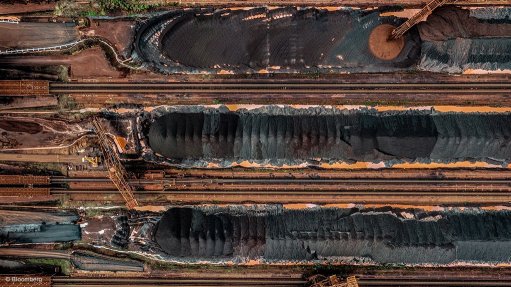Association highlights most prevalent health and safety risks at mines
The Aggregate and Sand Producers Association of Southern Africa (Aspasa) outlined the top ten health and safety risks at mines at the Electra Mining West Africa 2014 Indaba and advised mine bosses on what steps to take to mitigate these risks.
Aspasa performs health and safety audits once a year for its 120 members, which is how it gathers information on health and safety, and the problems and challenges in the industry.
Aspasa director Nico Pienaar tells Mining Weekly that, through the yearly audits, the association noticed that there was a serious need for training in the openpit mining industry.
“As a result, we have been holding health and safety workshops throughout the country, educating . . . senior management to shop stewards on the importance of following rules and regulations with regard to health and safety on site,” he says.
Pienaar points out that the top ten risks are behaviour problems, poor communication, vehicle accidents that involve trackless mobile equipment, explosives, electricity, working at heights, confined spaces, fire, lifting and falling objects, as well as falls-of-ground incidents in underground mining.
“In Africa, vehicle accidents involving trackless mobile equipment is the number one cause of fatalities in mining. People underestimate the size and strength of these vehicles, which do not even move very fast.”
Pienaar adds that various issues accounted for vehicle accidents, including not paying attention, not hearing the machines, owing to excessive noise on site and a lack of understanding of what the machines do.
“Falls of ground is another major cause of fatalities in South Africa. It is a constant danger underground, as well as on quarries where slopes and unstable ground may give way underfoot.”
Pienaar adds that electricity is another major challenge, as it can lead to instant loss of life if there is no electricity insulation.
“One mistake can cause death. If employers do not comply with lock-out procedures and pay attention to employees working with electricity it could . . . cause fatalities.”
He points out that working at heights is another big concern, as employees often do not comply with regulations, stating that they should wear proper gear and safety equipment.
He adds that a lack of training and concentration are the two main causes of injuries and fatalities at work sites.
“Behavioural problems and a lack of concentration can be linked to socioeconomic issues, as many mineworkers do not have proper housing, which can contribute to restless or lack of sleep and can, subsequently, have detrimental consequences at work. People can also be affected by drugs, alcohol and strenuous work hours,” Pienaar notes.
He comments that employers need to address the housing needs of their employees to mitigate this problem.
Pienaar states that poor or a lack of communication can lead to misunderstandings and that explosives can cause major accidents on site if the transport and storage of explosives do not follow set procedures.
“Confined spaces are another challenge and procedures need to be in place to manage work in confined spaces underground and at opencast mines.”
He adds that the potential risks for fires being caused by electricity, chemicals and flammable gases need to be identified. Lifting and falling objects can cause problems when heavy items are not lifted correctly, or are not secured and fall onto workers.
Pienaar says it is important to identify the risks of each mine and to put in place appropriate health and safety policies to address them. It then becomes the responsibility of mine owners and safety officers to ensure that everyone, including workers and visitors, abide by these policies.
“Aspasa has developed its own health and safety system that is based on global best practices and adapted for African conditions. Mines throughout Africa can use the system and we strongly urge those without effective systems to get in contact with us for further assistance,” he notes.
Comments
Press Office
Announcements
What's On
Subscribe to improve your user experience...
Option 1 (equivalent of R125 a month):
Receive a weekly copy of Creamer Media's Engineering News & Mining Weekly magazine
(print copy for those in South Africa and e-magazine for those outside of South Africa)
Receive daily email newsletters
Access to full search results
Access archive of magazine back copies
Access to Projects in Progress
Access to ONE Research Report of your choice in PDF format
Option 2 (equivalent of R375 a month):
All benefits from Option 1
PLUS
Access to Creamer Media's Research Channel Africa for ALL Research Reports, in PDF format, on various industrial and mining sectors
including Electricity; Water; Energy Transition; Hydrogen; Roads, Rail and Ports; Coal; Gold; Platinum; Battery Metals; etc.
Already a subscriber?
Forgotten your password?
Receive weekly copy of Creamer Media's Engineering News & Mining Weekly magazine (print copy for those in South Africa and e-magazine for those outside of South Africa)
➕
Recieve daily email newsletters
➕
Access to full search results
➕
Access archive of magazine back copies
➕
Access to Projects in Progress
➕
Access to ONE Research Report of your choice in PDF format
RESEARCH CHANNEL AFRICA
R4500 (equivalent of R375 a month)
SUBSCRIBEAll benefits from Option 1
➕
Access to Creamer Media's Research Channel Africa for ALL Research Reports on various industrial and mining sectors, in PDF format, including on:
Electricity
➕
Water
➕
Energy Transition
➕
Hydrogen
➕
Roads, Rail and Ports
➕
Coal
➕
Gold
➕
Platinum
➕
Battery Metals
➕
etc.
Receive all benefits from Option 1 or Option 2 delivered to numerous people at your company
➕
Multiple User names and Passwords for simultaneous log-ins
➕
Intranet integration access to all in your organisation

















